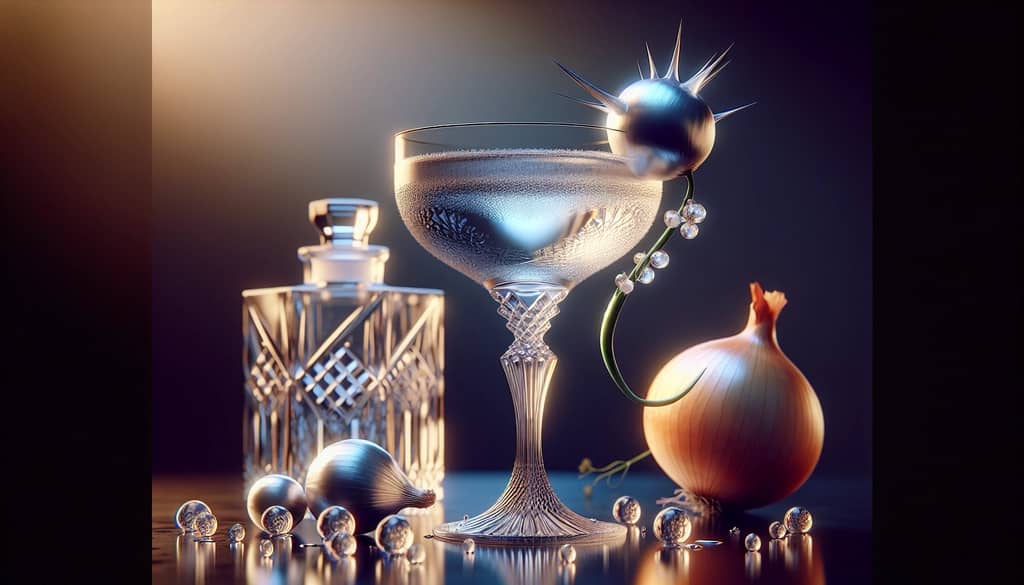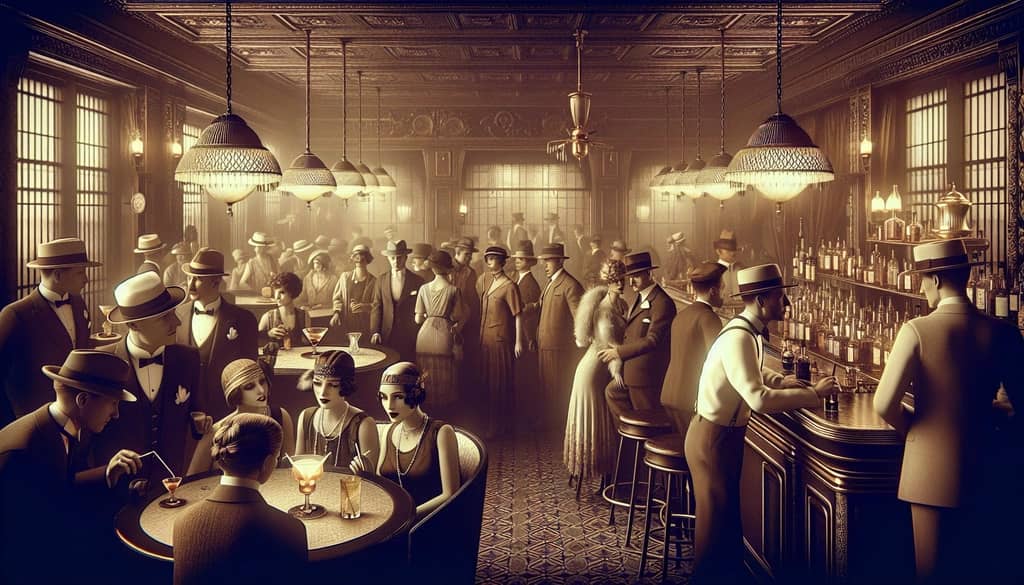Written by: Olivia Bennett
Updated on: 6/3/2025
Updated on: 6/3/2025
Favourite
Share
The History of the Gibson Cocktail: From Inception to Icon

I still remember the very first time I tried a Gibson Cocktail. I was in my early thirties, perched at the polished brass rail of a cozy, dimly lit speakeasy in downtown Manhattan. They served it in a chilled coupette with a single pearl onion skewered on a slender pick—a sight I found both intriguing and a bit whimsical. After all, any variation of a Martini that dares to replace the classic olive or lemon twist with a pickled onion has to have a story up its sleeve. And as I soon discovered, the Gibson has plenty of tales to tell.
At its simplest, the Gibson is a no-frills mix of gin (or vodka) and dry vermouth, stirred down to subzero temperatures, then crowned with that single onion. But tracing its roots reveals a narrative clad in folklore and personal boasts. One popular account involves Walter D. K. Gibson, a California businessman who supposedly asked bartenders to give him a “Martini without the extras,” garnished with an onion for good luck. Another version credits illustrator Charles Dana Gibson, the man behind the iconic “Gibson Girl,” who is said to have concocted the drink to outdo friends in a cocktail challenge—a story as playful as the garnish itself.

Mystery aside, what’s certain is that this savvy twist on the standard Martini began capturing hearts in the early 20th century. As the Prohibition era waned, bartenders from coast to coast embraced the Gibson, drawn to its sophisticated simplicity and unique flavor. Around that same period, references to the wolfschmidt gibson cocktail history emerged, highlighting the rise of vodka-based Gibsons—particularly those mixed with certain vodka brands, including Wolfschmidt. While gin dominated cocktail culture long before vodka crashed the party, those who wanted a subtler flavor profile found the vodka variation irresistible.
Even so, many die-hard enthusiasts (myself included) remain smitten with a gin-based Gibson. Something about the interplay of juniper and botanicals with a sweet-yet-tangy onion garnish creates a flavor duet both classic and exciting. In the words of veteran bartender Jill O’Connell, from a historic bar in Boston, “You might think it’s just a Martini with an onion, but the sweet bite it adds pulls you in for another sip—there’s no going back.”
A major part of the Gibson’s enduring charm is its adaptability. Take wolfschmidt gibson cocktail history as an example: it encapsulates how marketing and post-war trends fueled the cocktail’s popularity, especially through the mid-century boom. Swanky lounges showcased the Gibson’s delicate difference, while home bartenders relished the novelty of surprising dinner-party guests with an onion garnish instead of the usual olive.
Today, modern mixologists continue to refine the Gibson, stirring in twists like homemade onion brines or experimenting with specialty gins and vermouths to highlight different botanicals. You’ll find them served in everything from vintage coupettes and Nick & Nora glasses to the more traditional Martini glass. Despite these variations, the Gibson’s identity remains fixed: crisp, aromatic, and distinctively savory.

If you’re craving your own taste of this storied drink, here’s my go-to recipe:
- 60 ml gin (or vodka, if that’s more your style)
- 15 ml dry vermouth.
- 1–2 cocktail onions for garnish
- Thoroughly chill a mixing glass and a coupette (or Martini glass).
- In the mixing glass, combine your choice of spirit and the dry vermouth over ice.
- Stir gently for about 20–30 seconds, allowing the drink to reach an almost glacial temperature.
- Strain into your pre-chilled glass.
- Garnish with one or two crisp cocktail onions.
When I was in my mid-thirties, balancing work deadlines with an ever-growing fascination for bar culture, discovering the Gibson felt like stumbling onto a wonderful, onion-garnished secret. I still adore the moment of surprise when I offer it to a friend, and they realize just how much that sweet-yet-salty onion can transform a classic cocktail.
It may look like a Martini set slightly askew, but the Gibson has proven its staying power—like so many timeless concoctions that began as a playful challenge or a simple quirk. Whether you lean toward bold, botanical gin or prefer the lighter notes of vodka, the Gibson’s ascent from mysterious origins to cocktail royalty stands as a testament to the ingenuity of bartenders and the curiosity of drinkers everywhere. One sip of that briny onion-laced goodness, and you’ll see why its story has endured for generations.